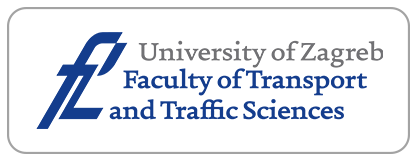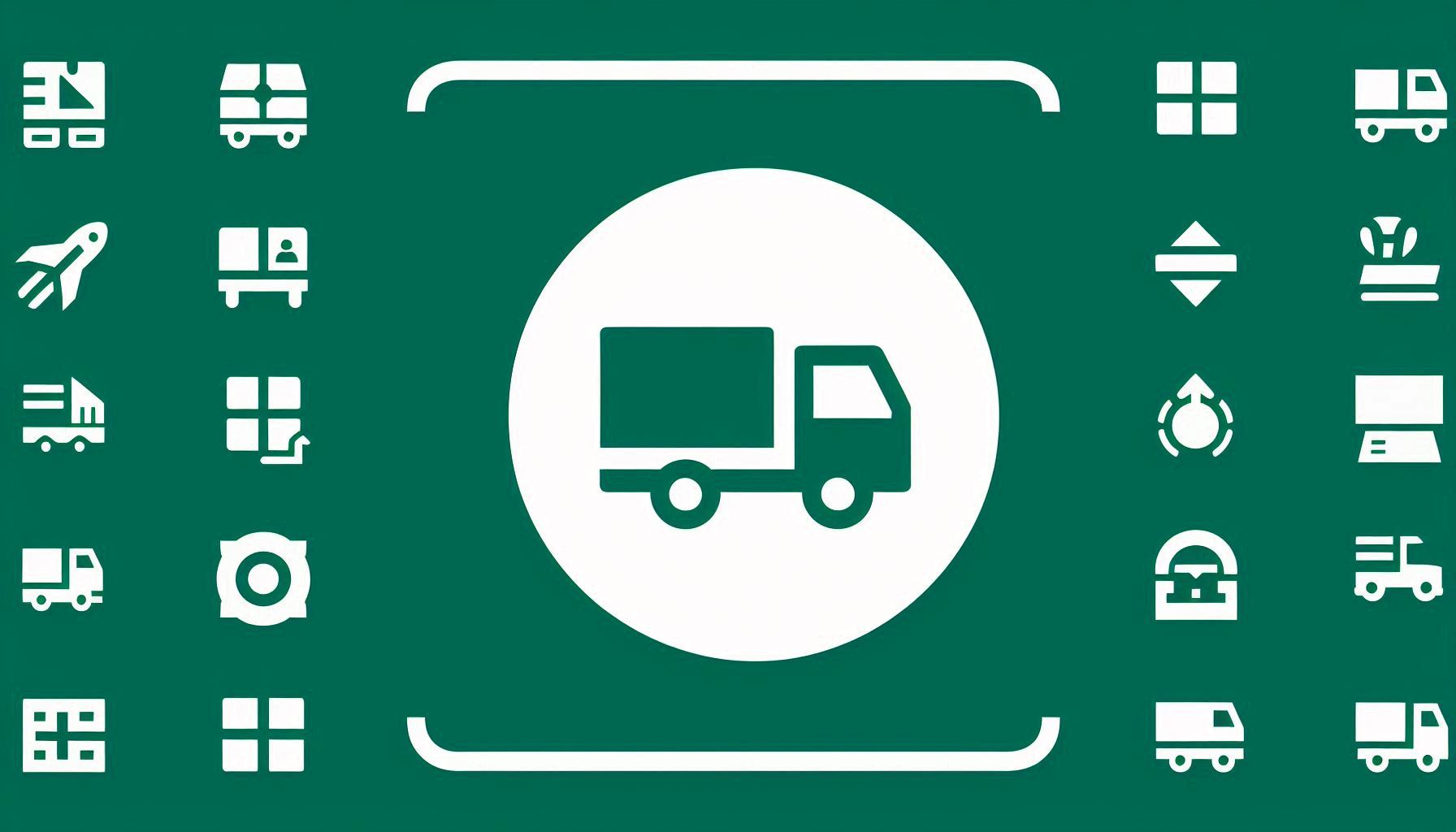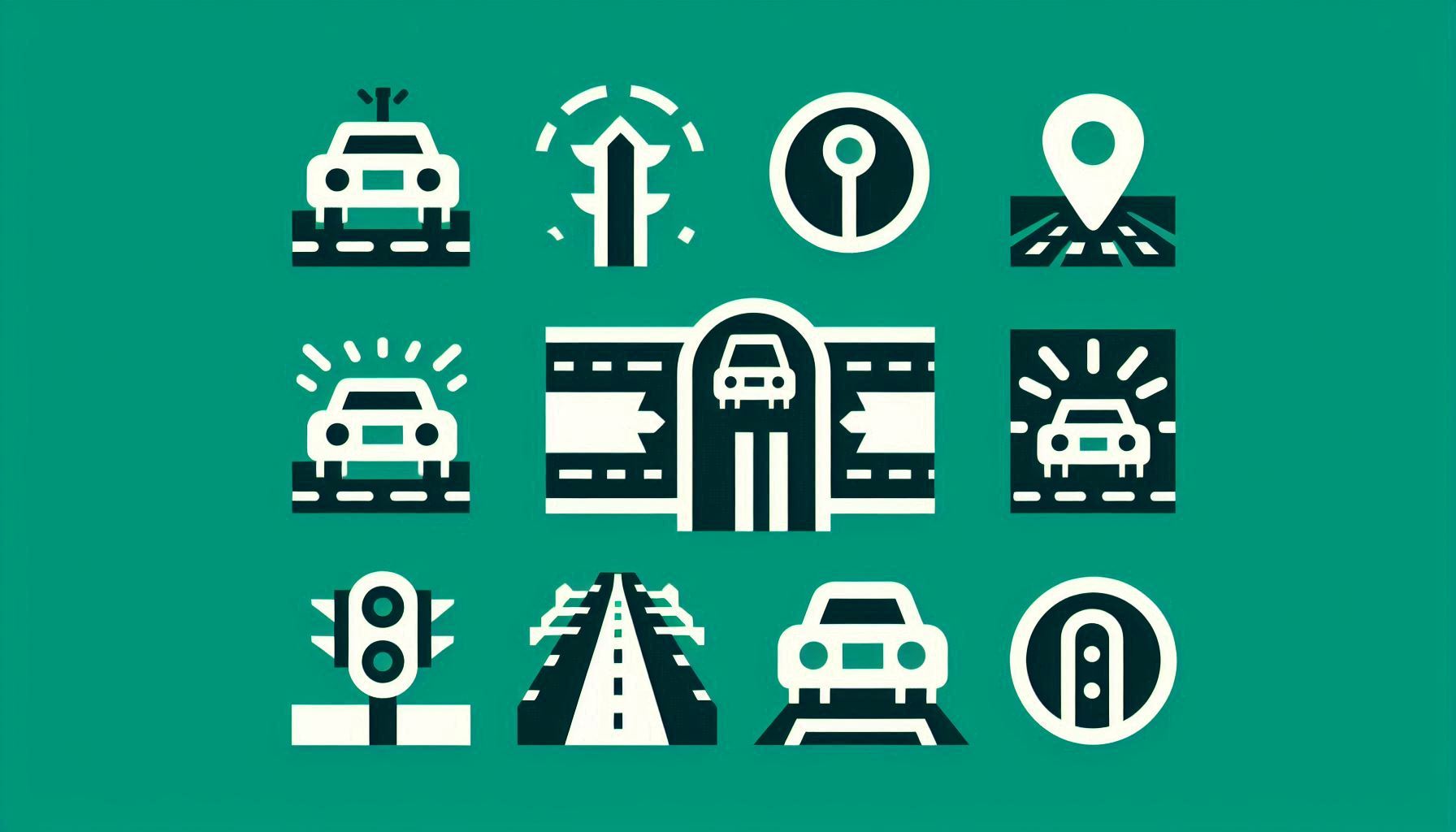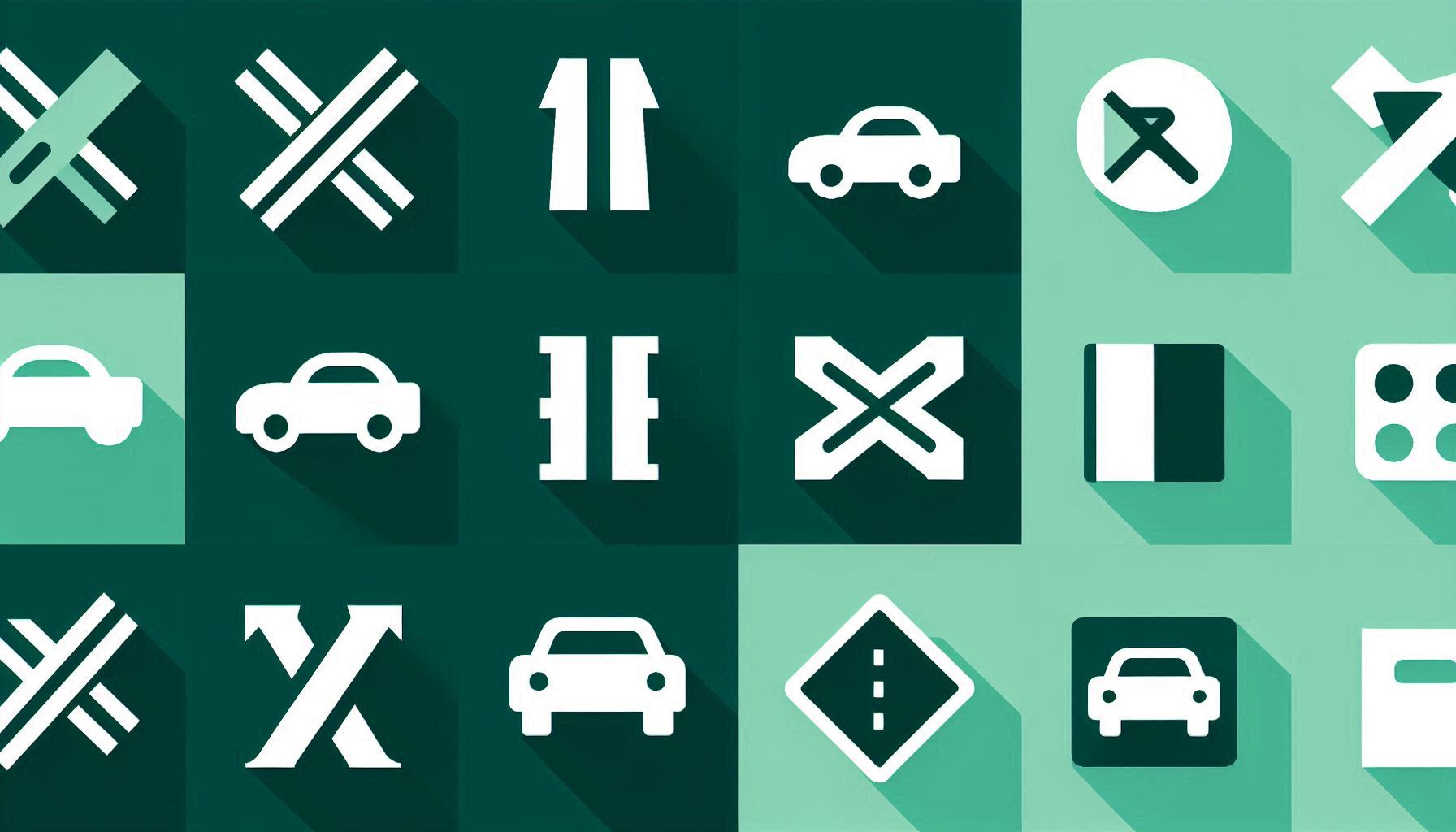Stratified Assessment of Urban Low-Carbon Travel Potential
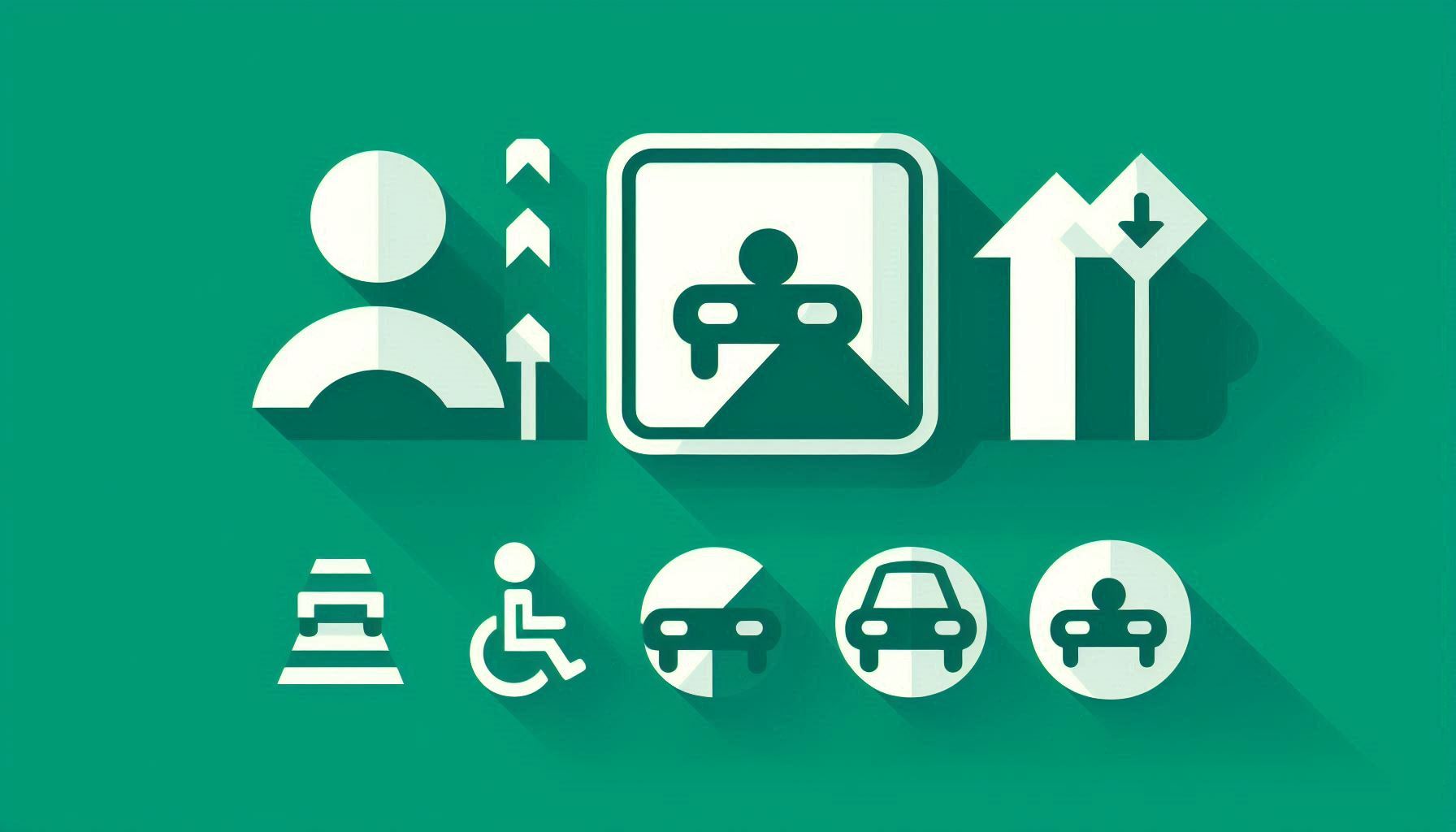
Downloads
Non-motorised travel and public transportation travel are recognised as low-carbon travel modes, in contrast to car travel, which is considered a non-low-carbon option. Based on this, the paper proposes a stratified assessment method for the urban low-carbon travel potential. The proportion of the motorised travel population that could potentially shift to non-motorised travel within the entire travel population is defined as the urban Tier 1 low-carbon travel potential. Meanwhile, the proportion of the car travel population that could potentially shift to public transportation travel within the entire travel population is defined as the urban Tier 2 low-carbon travel potential. This method holistically presents the potential for improvement in urban traffic carbon emission control. This method considers distance as a primary negative factor affecting the residents’ willingness to engage in non-motorised travel compared to motorised travel. Additionally, it recognises connection, delay and transfer as the main negative factors influencing the residents’ willingness for public transportation travel over car travel. By comparing the actual travel distances of residents and the actual intensity of connection, delay and transfer in public transportation travel modes with the assumed maximum acceptable distances and intensity for residents, the method identifies the number of people who could potentially shift to corresponding levels of low-carbon travel in hypothetical scenarios. Based on this, the corresponding low-carbon travel potential values are calculated. The method then further analyses the trend of these values as the residents’ acceptable thresholds for non-motorised travel distances and acceptable intensity for public transportation travel connection, delay and transfer change. A relationship curve is fitted, which intriguingly exhibits a reverse “S” shape, allowing for the identification of the “rapid release zone” and “key points” on the curve. These insights are essential for effectively targeting interventions to increase the adoption of low-carbon travel modes. This paper takes the cities of Shanghai and Wuhan in China as examples, conducting a stratified assessment of the low-carbon travel potential for both cities based on 19,732 daily travel origin– destination (OD) survey samples from residents. Additionally, the low-carbon travel potential of the two cities is visualised by district, enabling an analysis of the characteristics of low-carbon travel potential in each city and a comparison of the differences in low-carbon travel potential between them.
Downloads
Nations U. The Paris Agreement. United Nations n.d. https://www.un.org/en/climatechange/paris-agreement (accessed November 29, 2023).
Net zero targets are becoming mainstream in G20 governments and…. Energy & Climate Intelligence Unit 2021. https://eciu.net/media/press-releases/2021/net-zero-targets-are-becoming-mainstream-in-g20-governments-and-business-but-more-must-follow-to-realise-ambition-loops-that-can-accelerate-the-transition (accessed February 1, 2023).
Li W, et al. Assessing the transition to low-carbon urban transport: A global comparison. Resources Conservation and Recycling 2022;180:106179. DOI: 10.1016/j.resconrec.2022.106179.
International Energy Agency. Global Energy Review: CO2 Emissions in 2021 – Analysis. IEA 2022. https://www.iea.org/reports/global-energy-review-co2-emissions-in-2021-2 (accessed December 22, 2023).
Lu L, Wang C, Deng W, Bing X. An optimal allocation model of public transit mode proportion for the low-carbon transportation. Mathematical Problems in Engineering 2015;2015:390606. DOI: 10.1155/2015/390606.
Patalas-Maliszewska J, Losyk H. Analysis of the development and parameters of a public transport system which uses low-carbon energy: The evidence from Poland. Energies 2020;13:5779. DOI: 10.3390/en13215779.
Prabhu A, Pai M. Buses as low-carbon mobility solutions for urban India evidence from two cities. Transportation Research Record 2012:15–23. DOI: 10.3141/2317-03.
Sun X, Lu H, Chu W. A low-carbon-based bilevel optimization model for public transit network. Mathematical Problems in Engineering 2013;2013:374826. DOI: 10.1155/2013/374826.
Andong RF, Sajor E. Urban sprawl, public transport, and increasing CO2 emissions: The case of Metro Manila, Philippines. Environment Development and Sustainability 2017;19:99–123. DOI: 10.1007/s10668-015-9729-8.
Li H, Strauss J, Liu L. A panel investigation of high-speed rail (HSR) and urban transport on China’s carbon footprint. Sustainability 2019;11:2011. DOI: 10.3390/su11072011.
Lu L, Wang C, Deng W, Bing X. An optimal allocation model of public transit mode proportion for the low-carbon transportation. Mathematical Problems in Engineering 2015;2015:390606. DOI: 10.1155/2015/390606.
Yu X, et al. Optimal routing of multimodal mobility systems with ride‐sharing. International Transactions in Operational Research 2021;28:1164–89. DOI: 10.1111/itor.12870.
Greenhouse gas reporting: Conversion factors 2019. GOVUK n.d. https://www.gov.uk/government/publications/greenhouse-gas-reporting-conversion-factors-2019 (accessed October 29, 2022).
Zhao P, et al. Analysis of key factors affecting low-carbon travel behaviors of urban residents in developing countries: A case study in Zhenjiang, China. Sustainability 2023;15:5375. DOI: 10.3390/su15065375.
Liao C, Zhan X, Huang Y. Understanding the effect of proactive personality and perceived consumer effectiveness on low-carbon travel intention. Heliyon 2023;9:e19321. DOI: 10.1016/j.heliyon.2023.e19321.
Cao C, Zhen F, Huang X. How does perceived neighborhood environment affect commuting mode choice and commuting CO2 emissions? An empirical study of Nanjing, China. International Journal of Environmental Research and Public Health 2022;19:7649. DOI: 10.3390/ijerph19137649.
Daellenbach N. Low-carbon travel mode choices: The role of time perceptions and familiarity. Transportation Research Part D: Transport and Environment 2020;86:102378. DOI: 10.1016/j.trd.2020.102378.
Buchs M, et al. Promoting low carbon behaviours through personalised information? Long-term evaluation of a carbon calculator interview. Energy Policy 2018;120:284–93. DOI: 10.1016/j.enpol.2018.05.030.
Leroutier M, Quirion P. Tackling car emissions in urban areas: Shift, avoid, improve. Ecological Economics 2023;213:107951. DOI: 10.1016/j.ecolecon.2023.107951.
D’Almeida L, Rye T, Pomponi F. Emissions assessment of bike sharing schemes: The case of Just Eat Cycles in Edinburgh, UK. Sustainable Cities and Society 2021;71:103012. DOI: 10.1016/j.scs.2021.103012.
Glick TB, Figliozzi MA. Evaluation of route changes utilizing high-resolution GPS bus transit data. Transportation Research Record 2018;2672:199–209. DOI: 10.1177/0361198118793519.
Bagheri M, Mladenovic MN, Kosonen I, Nurminen JK. Analysis of potential shift to low-carbon urban travel modes: A computational framework based on high-resolution smartphone data. Sustainability 2020;12:5901. DOI: 10.3390/su12155901.
Ding L, Yang X. The response of urban travel mode choice to parking fees considering travel time variability. Advances in Mechanical Engineering 2020;2020:8969202. DOI: 10.1155/2020/8969202.
Tong YD, et al. Potential for greenhouse gas (GHG) emissions savings from replacing short motorcycle trips with active travel modes in Vietnam. Transportation 2023. DOI: 10.1007/s11116-023-10394-0.
Beckx C, et al. Limits to active transport substitution of short car trips. Transportation Research Part D: Transport and Environment 2013;22:10–3. DOI: 10.1016/j.trd.2013.03.001.
Yin G, et al. How to quantify the travel ratio of urban public transport at a high spatial resolution? A novel computational framework with geospatial big data. International Journal of Applied Earth Observation and Geoinformation 2023;118:103245. DOI: 10.1016/j.jag.2023.103245.
Yoo S, Cho A, Salman F, Yoshida Y. Green paradox: Factors affecting travel distances and fuel usages, evidence from Japanese survey. Journal of Cleaner Production 2020;273:122280. DOI: 10.1016/j.jclepro.2020.122280.
Maat K, Timmermans HJP. A causal model relating urban form with daily travel distance through activity/travel decisions. Transportation Planning and Technology 2009;32:115–34. DOI: 10.1080/03081060902861285.
Liu S, Yamamoto T, Yao E. Joint modeling of mode choice and travel distance with intra-household interactions. Transportation 2023. DOI: 10.1007/s11116-022-10286-9.
He M, et al. Exploring the nonlinear and threshold effects of travel distance on the travel mode choice across different groups: An empirical study of Guiyang, China. International Journal of Environmental Research and Public Health 2022;19:16045. DOI: 10.3390/ijerph192316045.
Neves A, Brand C. Assessing the potential for carbon emissions savings from replacing short car trips with walking and cycling using a mixed GPS-travel diary approach. Transportation Research Part A: Policy and Practice 2019;123:130–46. DOI: 10.1016/j.tra.2018.08.022.
Qian C, Zhou Y, Chen J. The coupling strategy research of urban public space and traffic for improving the residents’ low-carbon travel accessibility: A case study of Hexi New City central area in Nanjing. Sustainability 2017;9:2166. DOI: 10.3390/su9122166.
Active transportation and the built environment of a mid-size global south city. Sustainable Cities and Society 2023;89:104329. DOI: 10.1016/j.scs.2022.104329.
Mohammadi R, Golroo A, Hasani M. Effect of traffic information on travel time of medium-distance trips: A case study in Tehran. Promet-Traffic & Transportation 2018;30:281–91. DOI: 10.7307/ptt.v30i3.2738.
Bajaj G, Singh P. Understanding preferences of delhi metro users using choice-based conjoint analysis. Ieee Transactions on Intelligent Transportation Systems 2021;22:384–93. DOI: 10.1109/TITS.2019.2958259.
Zgheib N, Abou-Zeid M, Kaysi I. Modeling demand for ridesourcing as feeder for high capacity mass transit systems with an application to the planned Beirut BRT. Transportation Research Part A: Policy and Practice 2020;138:70–91. DOI: 10.1016/j.tra.2020.05.019.
Saiyad G, Srivastava M, Rathwa D. Assessment of Transit Accessibility Through Feeder Modes and Its Influence on Feeder Mode Choice Behavior. Arabian Journal for Science and Engineering 2022;47:4483–97. DOI: 10.1007/s13369-021-06082-9.
Zhu Z, Guo X, Zeng J, Zhang S. Route design model of feeder bus service for urban rail transit stations. Mathematical Problems in Engineering 2017;2017:1090457. DOI: 10.1155/2017/1090457.
Yang L, Shang P, Yao Y, Zeng Z. A dynamic scheduling process and methodology using route deviations and synchronized passenger transfers for flexible feeder transit services. Computers & Operations Research 2022;146:105917. DOI: 10.1016/j.cor.2022.105917.
Sheng Z, et al. Taxi travel time prediction based on fusion of traffic condition features. Computers & Electrical Engineering 2023;105:108530. DOI: 10.1016/j.compeleceng.2022.108530.
Wang J, Lv J, Zhang Q, Yan X. Impact of connected vehicle guidance information on network-wide average travel time. Advances in Mechanical Engineering 2017;9:1687814016683356. DOI: 10.1177/1687814016683356.
Li Z, Zeng J. Increasing relative risk taking in a choice context with source-dependent travel time risks. Transportation 2022. DOI: 10.1007/s11116-022-10316-6.
Zhan X, Szeto WY, Shui CS, Chen X. A modified artificial bee colony algorithm for the dynamic ride-hailing sharing problem. Transportation Research Part E: Logistics and Transportation Review 2021;150:102124. DOI: 10.1016/j.tre.2020.102124.
Liao Y, Gil J, Pereira RHM, Yeh S, Verendel V. Disparities in travel times between car and transit: Spatiotemporal patterns in cities. Scientific Reports 2020;10:4056. DOI: 10.1038/s41598-020-61077-0.
Bagheri M, et al. A computational framework for revealing competitive travel times with low-carbon modes based on smartphone data collection. Journal of Advanced Transportation 2020;2020:4693750. DOI: 10.1155/2020/4693750.
Chen K, et al. Nonlinear rail accessibility and road spatial pattern effects on house prices. Sustainability 2022;14:4700. DOI: 10.3390/su14084700.
Wu P, et al. How determinants affect transfer ridership between metro and bus systems: A multivariate generalized poisson regression analysis method. Sustainability 2022;14:9666. DOI: 10.3390/su14159666.
Gan Z, Yang M, Zeng Q, Timmermans HJP. Associations between built environment, perceived walkability/ bikeability and metro transfer patterns. Transportation Research Part A-Policy and Practice 2021;153:171–87. DOI: 10.1016/j.tra.2021.09.007.
Yang Y, Chen J, Du Z. Analysis of the passenger flow transfer capacity of a bus-subway transfer hub in an urban multi-mode transportation network. Sustainability 2020;12:2435. DOI: 10.3390/su12062435.
Espino R, Roman C. Valuation of transfer for bus users: The case of Gran Canaria. Transportation Research Part A: Policy and Practice 2020;137:131–44. DOI: 10.1016/j.tra.2020.05.003.
Wu P, et al. How Determinants affect transfer ridership between metro and bus systems: a multivariate generalized poisson regression analysis method. Sustainability 2022;14:9666. DOI: 10.3390/su14159666.
Faulhaber AK, et al. Development of a passenger assistance system to increase the attractiveness of local public transport. Sustainability 2022;14:4151. DOI: 10.3390/su14074151.
Guo Z, Wilson NHM. Assessing the cost of transfer inconvenience in public transport systems: A case study of the London underground. Transportation Research Part A: Policy and Practice 2011;45:91–104. DOI: 10.1016/j.tra.2010.11.002.
Ciuffini F, Tengattini S, Bigazzi AY. Mitigating increased driving after the COVID-19 pandemic: An analysis on mode share, travel demand, and public transport capacity. Transportation Research Record 2022:03611981211037884. DOI: 10.1177/03611981211037884.
Liu X, Gao L, Ni A, Ye N. Understanding better the influential factors of commuters’ multi-day travel behavior: Evidence from Shanghai, China. Sustainability 2020;12:376. DOI: 10.3390/su12010376.
Mocanu T, Joshi J, Winkler C. A data-driven analysis of the potential of public transport for German commuters using accessibility indicators. European Transport Research Review 2021;13:54. DOI: 10.1186/s12544-021-00507-0.
Zhang X, Li N. Characterizing individual mobility perturbations in cities during extreme weather events. International Journal of Disaster Risk Reduction 2022;72:102849. DOI: 10.1016/j.ijdrr.2022.102849.
Morelli AB, Cunha AL. Measuring urban road network vulnerability to extreme events: An application for urban floods. Transportation Research Part D: Transport and Environment 2021;93:102770. DOI: 10.1016/j.trd.2021.102770.
Azolin LG, Rodrigues da Silva AN, Pinto N. Incorporating public transport in a methodology for assessing resilience in urban mobility. Transportation Research Part D: Transport and Environment 2020;85:102386. DOI: 10.1016/j.trd.2020.102386.
Krumdieck S, Page S, Dantas A. Urban form and long-term fuel supply decline: A method to investigate the peak oil risks to essential activities. Transportation Research Part A: Policy and Practice 2010;44:306–22. DOI: 10.1016/j.tra.2010.02.002.
Barnett A, et al. Predictors of healthier and more sustainable school travel mode profiles among Hong Kong adolescents. International Journal of Behavioral Nutrition and Physical Activity 2019;16:48. DOI: 10.1186/s12966-019-0807-4.
Hu L, Schneider RJ. Shifts between automobile, bus, and bicycle commuting in an urban setting. Journal of Urban Planning and Development 2015;141:04014025. DOI: 10.1061/(ASCE)UP.1943-5444.0000214.
Venkadavarahan M, Marisamynathan S. Estimation of rider’s shifting intention for electric bike adoption: An integrated choice and latent variable approach. Transportation Letters-the International Journal of Transportation Research 2022;14:1151–61. DOI: 10.1080/19427867.2021.2000815.
Venkadavarahan M, Marisamynathan S. Estimation of rider’s shifting intention for electric bike adoption: An integrated choice and latent variable approach. Transportation Letters-the International Journal of Transportation Research 2022;14:1151–61. DOI: 10.1080/19427867.2021.2000815.
Gao K, Sun L. Incorporating inertia in mode choice and influential factors of car stickiness: implications for shifts to public transit. Promet-Traffic & Transportation 2018;30:293–303. DOI: 10.7307/ptt.v30i3.2507.
Diana M, Ceccato R. A multimodal perspective in the study of car sharing switching intentions. Transportation Letters-the International Journal of Transportation Research 2022;14:317–23. DOI: 10.1080/19427867.2019.1707351.
Martins MC da M, Rodrigues da Silva AN, Pinto N. An indicator-based methodology for assessing resilience in urban mobility. Transportation Research Part D: Transport and Environment 2019;77:352–63. DOI: 10.1016/j.trd.2019.01.004.
Statistical Bulletin on National Economic and Social Development of Shanghai Municipality, 2022_Statistical Bulletin_Shanghai Municipal Bureau of Statistics n.d. https://tjj.sh.gov.cn/tjgb/20230317/6bb2cf0811ab41eb8ae397c8f8577e00.html (accessed May 15, 2023).
Shanghai Slow-moving Transportation Planning and Design Guidelines Released, Creating a Composite and Three-dimensional Slow-moving Transportation System n.d. http://sh.people.com.cn/n2/2021/0831/c138654-34891550.html (accessed May 15, 2023).
Shanghai Metro n.d. http://www.shmetro.com/node49/202112/con115636.htm (accessed May 15, 2023).
Wuhan Municipal Bureau of Statistics n.d. http://tjj.wuhan.gov.cn/tjfw/tjgb/202303/t20230330_2177979.shtml (accessed May 15, 2023).
Wang Z. City of a hundred lakes Wuhan: Do a good job of “river and lake” article to create an ecological green city n.d. http://swj.wuhan.gov.cn/tzdt/jcss/202004/t20200426_1127097.html (accessed May 15, 2023).
Zhao Y. Shanghai World’s No. 1, Wuhan Surpasses Shenzhen, Top 10 Cities in Metro Mileage Shuffle n.d. https://www.inewsweek.cn/finance/2022-01-07/14865.shtml (accessed March 5, 2024).
Wang J, et al. A Reflection on the response to sudden-onset disasters in the post-pandemic era: A graded assessment of urban transportation resilience taking Wuhan, China as an example. Sustainability 2022;14:10957. DOI: 10.3390/su141710957.
Azolin LG, Rodrigues da Silva AN, Pinto N. Incorporating public transport in a methodology for assessing resilience in urban mobility. Transportation Research Part D: Transport and Environment 2020;85:102386. DOI: 10.1016/j.trd.2020.102386.
Martins MC da M, Rodrigues da Silva AN, Pinto N. An indicator-based methodology for assessing resilience in urban mobility. Transportation Research Part D: Transport and Environment 2019;77:352–63. DOI: 10.1016/j.trd.2019.01.004.
Hatamzadeh Y. Do people desire to walk more in commuting to work? Examining a conceptual model based on the role of perceived walking distance and positive attitudes. Transportation Research Record 2019;2673:351–61. DOI: 10.1177/0361198119849397.
Ermagun A, Samimi A, Rashidi TH. How far is too far? Providing safe and comfortable walking environments. Transportation Research Record 2016;2586:72–82. DOI: 10.3141/2586-08.
Crust L, Keegan R, Piggott D, Swann C. Walking the walk: A phenomenological study of long distance walking. Journal of Applied Sport Psychology 2011;23:243–62. DOI: 10.1080/10413200.2010.548848.
Lin S, Wang J. Carbon emission reduction effect of transportation structure adjustment in China: An approach on multi-objective optimization model. Environmental Science and Pollution Research 2022;29:6166–83. DOI: 10.1007/s11356-021-16108-2.
Durand CP, et al. The Association of trip distance with walking to reach public transit: Data from the California household travel survey. Journal of Transport & Health 2016;3:154–60.
Wu X, Lu Y, Lin Y, Yang Y. Measuring the destination accessibility of cycling transfer trips in metro station areas: A big data approach. International Journal of Environmental Research and Public Health 2019;16:2641. DOI: 10.3390/ijerph16152641.
Ulak MB, Yazici A, Aljarrah M. Value of convenience for taxi trips in New York City. Transportation Research Part A: Policy and Practice 2020;142:85–100. DOI: 10.1016/j.tra.2020.10.016.
The land transport authority. Land transport master plans 2013. The land transport authority, Singapore; 2013.
Sun C, Chen X, Zhang HM, Huang Z. An evaluation method of urban public transport facilities resource supply based on accessibility. Journal of Advanced Transportation 2018;2018:e3754205. DOI: 10.1155/2018/3754205.
Jain D, Tiwari G. How the present would have looked like? Impact of non-motorized transport and public transport infrastructure on travel behavior, energy consumption and CO 2 emissions – Delhi, Pune and Patna. Sustainable Cities and Society 2016;22:1–10. DOI: 10.1016/j.scs.2016.01.001.
Tiwari G, Jain D, Ramachandra Rao K. Impact of public transport and non-motorized transport infrastructure on travel mode shares, energy, emissions and safety: Case of Indian cities. Transportation Research Part D: Transport and Environment 2016;44:277–91. DOI: 10.1016/j.trd.2015.11.004.
Ye M, Zeng S, Yang G, Chen Y. Identification of contributing factors on travel mode choice among different resident types with bike-sharing as an alternative. IET Intelligent Transport Systems 2020;14:639–46. DOI: 10.1049/iet-its.2019.0581.
Lu J. The influencing mechanism of urban travel carbon emissions from the perspective of built environment: The case of Guangzhou, China. Atmosphere 2023;14:547. DOI: 10.3390/atmos14030547.
Wang H, Huang H, Ni X, Zeng W. Revealing spatial-temporal characteristics and patterns of urban travel: A large-scale analysis and visualization study with taxi GPS Data. ISPRS International Journal of Geo-Information 2019;8:257. DOI: 10.3390/ijgi8060257.
Beckx C, et al. Limits to active transport substitution of short car trips. Transportation Research Part D: Transport and Environment 2013;22:10–3. DOI: 10.1016/j.trd.2013.03.001.
Jie T, Wei W, Jiang L. A sustainability-oriented optimal allocation strategy of sharing bicycles: Evidence from ofo usage in Shanghai. Resources, Conservation and Recycling 2020;153:104510. DOI: 10.1016/j.resconrec.2019.104510.
Jin H, et al. Competition and cooperation between shared bicycles and public transit: A case study of Beijing. Sustainability 2019;11:1323. DOI: 10.3390/su11051323.
Copyright (c) 2025 Keyuan DING, Yan ZHANG, Xu ZHOU, Hai-Xu GUO, Ran PENG

This work is licensed under a Creative Commons Attribution-NonCommercial 4.0 International License.





